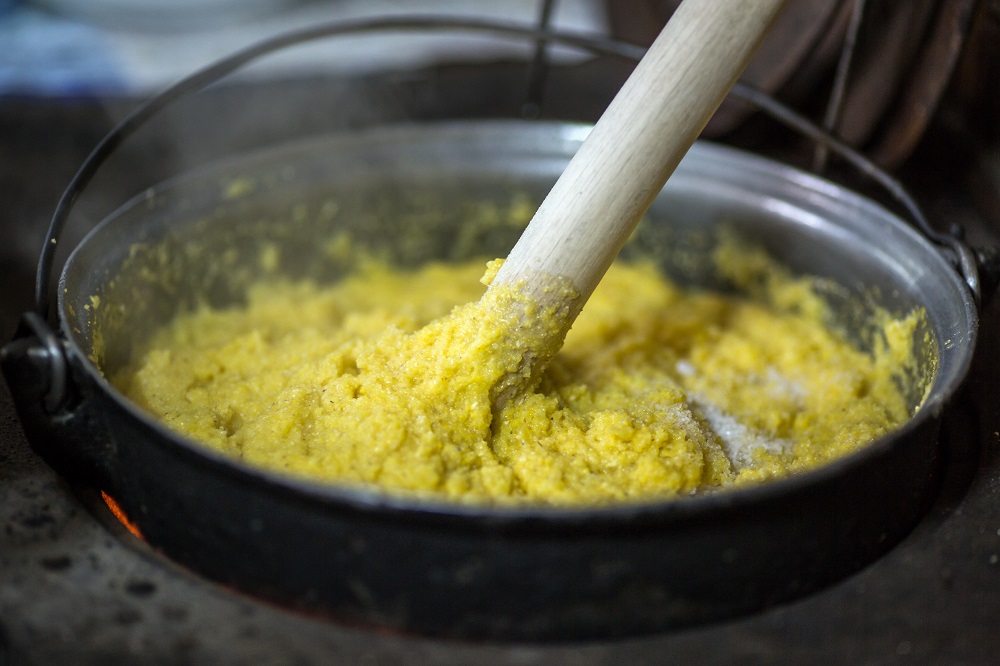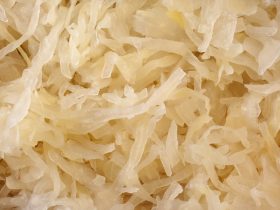Polenta is a traditionally Italian dish consisting of cornmeal or other grains boiled in water and served alongside other savory ingredients. Much like the American originating grits, polenta can possess a grainy or smooth texture, depending on the size of the ground cornmeal bits used.
Owing to the fact that polenta is quite easy to purchase in large volumes and is often packaged as such, many home cooks and restaurant chefs find themselves in a position wherein polenta will require long term storage. As such, the question of whether polenta can be frozen is raised.
Polenta may be frozen quite well owing to the fact that the cornmeal is otherwise not negatively affected by the environment of a freezer, allowing it to be stored without any significant loss in quality. However, in order to ensure that the polenta is kept at its best, certain steps must be taken while doing this.
Can Ready Made Polenta Be Frozen?
Polenta purchased in its processed and instant form may still be frozen, and quite well at that – though this depends largely on the sort of ingredients incorporated into the polenta, whether by the manufacturing company or by you.
If the polenta has simply been reconstituted with water, then it will keep very well in the freezer with only a minimal amount of textural degradation occurring.

However, in the event that the polenta has been cooked or reconstituted with cream, milk, or other sorts of dairy products, it is likely that the lipid molecules present in these ingredients will separate, forming a grainy texture and a layer of deposited oil or fat atop the polenta.
How Long Will Polenta Last in the Refrigerator?
After cooking, polenta may last in the refrigerator for up to five days before beginning to show signs of spoilage. In order to ensure that the polenta lasts this length of time, it must be stored in a certain way so as to insulate it against any opportunistic microbial life as well as the quality degrading effects of the open air.
If the polenta has just been removed from the stove after cooking, first allow it to cool to room temperature so as to prevent the formation of water condensation both within the container and the refrigerator itself.
Once cooled, either slice the polenta or pile it into an air-tight container free of odors and made of a material that will not leach its taste into the cornmeal, such as treated plastic or glass.
Store this container of polenta in the driest part of the refrigerator, as far as possible from the crisper drawer and any sources of cold air, such as a vent or fan.
How Long Does Polenta Last After Opening?
Polenta is primarily purchased in its dry and raw form, presenting a grainy and sand-like texture completely devoid of any sort of moisture. As such, one of the most important factors to control when choosing to store polenta in its uncooked form is that of relative humidity and moisture.
Ordinarily, most food manufacturing companies ensure that the polenta is kept as shelf-stable as possible through a variety of methods designed to combat the effects of both the environment and that of bacteria. Among these is the more simplistic design of an air-tight storage container, such as the one the polenta is normally purchased in. Being made of a non-porous and non-absorbent material, the commercially produced storage container of most polenta brands is designed to insulate it from both temperature and moisture.
However, this no longer applies once the packaging has either been opened or otherwise compromised by mechanical damage. Once polenta has been exposed to the open air, it is likely that both microbiological life and moisture present within the air has made its way inside the storage packaging.
As such, polenta will only last for up to five days after opening if no other attempts at preservation are made. It is best to store the polenta in a dry and cool corner of the pantry or cupboard, free of insects and direct sunlight.
What to Do with Frozen Polenta
Considering the fact that polenta is simply cooked cornmeal, frozen polenta may be repurposed into a variety of dishes that may also present much the same experience as freshly cooked polenta.
Casseroles involving polenta as a carbohydrate base, creamy polenta reconstituted and simmered in cream or milk, and even hard-packed polenta baked in an oven and served with various toppings are all perfectly viable routes to take when choosing to cook your previously frozen polenta.
What Do You Need to Freeze Polenta?
Freezing polenta is relatively simple compared to the process of preserving other types of food. Owing to its simplistic ingredient matrix and the nature of cornmeal, very little equipment is required in order to ensure the shelf stability of polenta within the freezer.
All that you will need in order to freeze polenta is a knife, a resealable plastic pouch or freezer bag as well as a roll of aluminum foil.
How to Freeze Polenta
In order to begin freezing polenta, first allow it to cool off to approximately room temperature, especially if the polenta has just recently been removed from the stove after cooking. This is to ensure that no steam may cause water condensation in the freezer from the contrast between temperatures, creating a layer of frost along the walls of the freezer and within the container itself.
Once sufficiently cooled off, set the polenta on a dish or tray and cut it into your desired serving size with a knife. Ensure that there is a small amount of open space placed between each slice in order to prevent them from fusing together once more.
Now sliced, wrap each individual piece of polenta in several sheets of aluminum foil, wrapping in alternating directions in order to develop an even coverage of insulation and prevent any open spots from being exposed to the harsh freezer air.
With each slice of polenta firmly wrapped in aluminum foil sheets, carefully pack them into your resealable plastic pouch or freezer bag. If so desired, you may use multiple plastic pouches or freezer bags so as to allow easier defrosting without removing the entire batch or individual slices of polenta.
Place the double-insulated polenta pieces in the deepest part of your freezer, some distance away from any sources of moving air, as these will cause freezer burn which will alter the quality of the polenta.
Stored in this way, polenta will last for up to three months before showing signs of spoilage, so long as it is not reheated and subsequently frozen again.
How to Thaw Polenta
In order to thaw your frozen polenta, simply remove your desired serving amount from the plastic pouch or freezer bag and remove all of its insulating layers. Place the polenta on a plate at room temperature.
The difference in temperatures between the frozen polenta and the room temperature air will cause condensation, which is entirely normal and nothing to worry about.
Once sufficiently warmed up, simply cook the polenta in any way you desire, such as baking or frying.
References
1. Righi Parenti, Giovanni (2003) [1995]. “Pisa, Lucca, Livorno”. La cucina toscana [Tuscan cuisine] (in Italian). Rome: Newton & Compton.
2. Miele NA, Di Monaco R, Formisano D, Masi P, Cavella S. Polenta-based snack development: from maize flour to final product by assessing structural, mechanical and sensory properties. J Food Sci Technol. 2018;55(7):2569-2578. doi:10.1007/s13197-018-3177-z





Hi, I'm Dom
Dom Eats was started to help other people fall in love with food. While cooking can feel intimidating, it doesn't have to be.